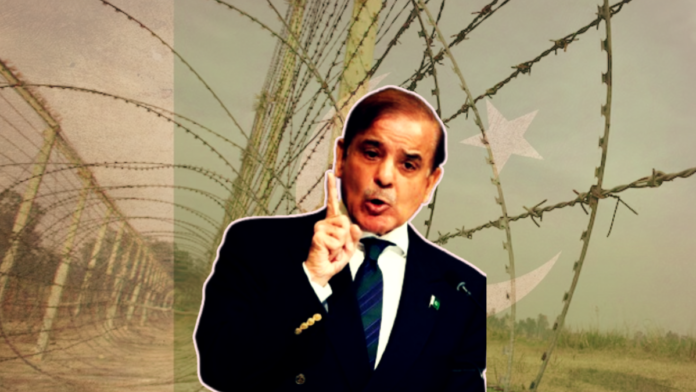Just three hours after finalising the understanding to stop the military action that was going on between the nuclear-armed nations, Pakistan violated it when explosions were heard in Jammu and Kashmir’s Srinagar, drone attacks were reported and blackout in several cities of bordering states was enforced. This paved the way for a crucial question that India has been asking for years: Can Pakistan be trusted?
What happened on May 10?
On May 10, India’s Foreign Secretary Vikram Misri announced that an understanding had been reached between India and Pakistan – this looked like a pause to the ongoing tensions post-Operation Sindoor. However, Jammu and Kashmir CM Omar Abdullah soon posted on X saying that explosions were heard in Srinagar. In a late-night media briefing, Misri called upon Pakistan to take appropriate steps to address these violations and deal with the situation with “seriousness and responsibility”.
“We call upon Pakistan to take appropriate steps to address these violations and deal with the situation with seriousness and responsibility…The armed forces are maintaining a strong vigil on the situation. They have been given instructions to deal strongly with any instances of repetition of the violations of the border along the International Border as well as the Line of Control,” he said.
At the same time, Pakistani PM Shehbaz Sharif addressed his nation, but did not mention a word about violations.
Read More | Yogi Adityanath confirms BrahMos use in Operation Sindoor; ‘ask Pakistan about its power’
Has Pakistan violated the ceasefire previously?
On April 25, three days after the Pahalgam terror attack, Pakistan Army reportedly initiated small-arms firing at various points along the Line of Control (LoC), particularly in the J&K’s Kupwara district. On May 7, India conducted Operation Sindoor hitting terror targets in Pakistan and Pakistan-occupied Kashmir (PoK). Pakistan then started shelling Indian villages across LoC. As many as 16 Indians including women and children lost their lives in these shellings.
Pakistan’s violation of the ceasefire during the Kargil war
Pakistan violated the ceasefire during the Kargil War in May 1999. The LoC ceasefire agreement, which was part of the Simla Agreement of 1972, was breached when Pakistani soldiers and militants infiltrated Indian positions in the Kargil sector of Jammu and Kashmir.
The infiltration began in early May 1999, though planning and movement started earlier, around late 1998. When Indian soldiers vacated the strategic heights in the Dras, Kargil, and Batalik sectors in winter, Pakistani forces, disguised as militants, occupied the areas. India launched Operation Vijay to evict the intruders and successfully regained its position.
Read More | India-Pak ceasefire | China condemns Pahalgam terror attack as Chinese foreign minister talks to NSA Ajit Doval
Timeline of Pakistan’s ceasefire violation since 1947
- Pakistan’s breach of trust can be traced back right from 1947. Post Independence, when Pakistan’s Pashtun militias entered Jammu and Kashmir before Hari Singh had signed the Instrument of Accession, it was the Indian Army who sent them back. Violations along the LoC continued till a ceasefire was agreed on 1949.
- In April 1965, Pakistan violated the ceasefire in the Rann of Kutch and a full-scale war broke out when Pakistani infiltration attempts in Kashmir. Even after a ceasefire, multiple violations from the Pakistani side were reported during the withdrawal phases.
- In 1971, Pakistan launched preemptive airstrikes on Indian airbases— initiating war despite existing peacetime status. From late 1980s. there has been a rise in Pakistan-backed cross-border infiltration, terror support, and intermittent shelling.
- Post the Kargil war of 1999, high frequency of LoC firing, mortar and sniper attacks and continuous violations including civilian casualties in border villages have been reported.
- In 2003, India-Pakistan Ceasefire Agreement was signed under which both countries agreed to a fresh ceasefire along the LoC and international border.
- However, between 2003–2013, over 1,000 violations reported along with frequent shelling in Poonch, Rajouri, and Kupwara sectors.
- A sharp increase in violations began yet again in 2014 and Pakistani terrorists carried out the Uri attack in 2016. In 2018, over 2,900 violations—one of the highest in a single year. Post the Pulwama attack in 2019, the situation worsened.
A renewed ceasefire agreement was reached in February 2021. Both countries agreed to “strict observance” of all agreements and ceasefire protocols. Pakistan has time and again violated the renewed agreement as well.
Read More | India firm on its stance on terror, no rollback of actions against Pakistan including Indus Waters Treaty: Govt Sources after ceasefire
In the current scenario, Indian citizens have also expressed deep mistrust toward Pakistan, specially those in Jammu & Kashmir, Punjab, and Rajasthan.
#WATCH | J&K | A resident of Samba, Jitendra Singh, says, “Trust is a big thing, but we cannot trust Pakistan as we don’t know when they would violate the ceasefire. They have done this earlier as well…” https://t.co/gtqYLkwTpE pic.twitter.com/rxXjNkJ36D
— ANI (@ANI) May 11, 2025
With a poor track record, it remains to be seen, whether the current understanding holds or not and for how long, remain open questions.
Read More | India, Pakistan agree to immediate ceasefire; EAM Jaishankar reiterates country’s ‘uncompromising stance against terrorism’


